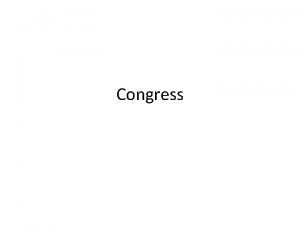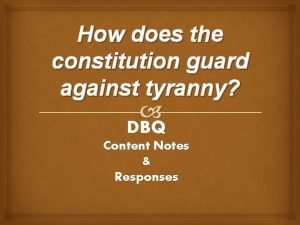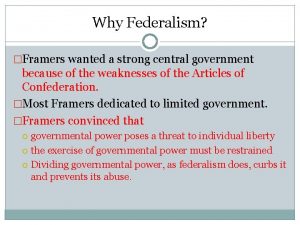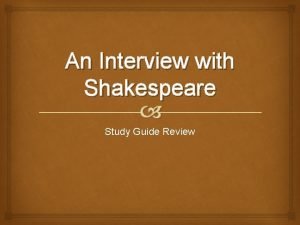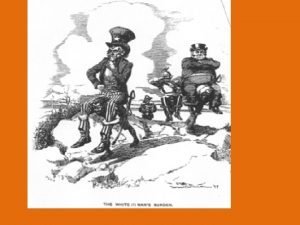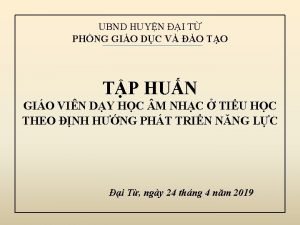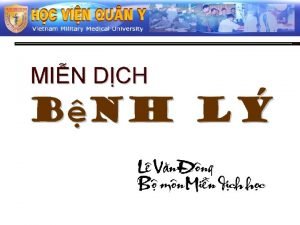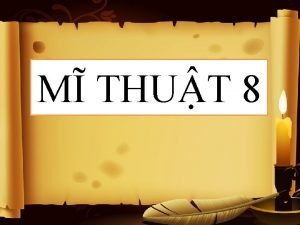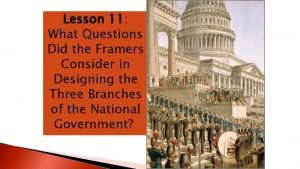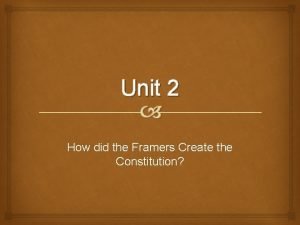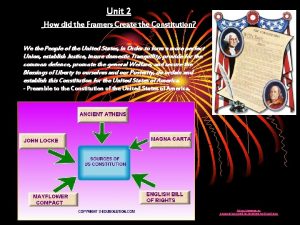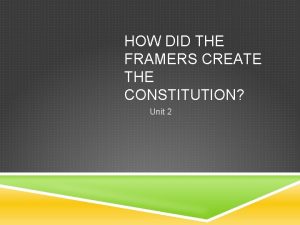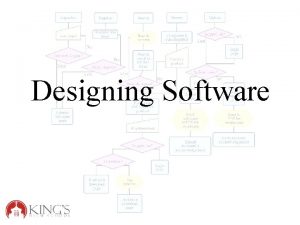What questions did the Framers consider when designing









- Slides: 9

What questions did the Framers consider when designing the three branches of our National Government? 2. 11 Vocabulary: deliberative body Electoral College enumerated powers necessary and proper clause separated powers shared powers

What did the delegates think of the balance of power among the branches of government? • Founders did not want executive offices to hold too much power (like in Parliament) • Did not want weak executives that could not check the powers of the state legislatures • They created a government of separate powers (checks and balances)

Legislative power • Congress was to be a deliberative body. Debating issues rather than deciding in haste • Bicameral limited reckless law passing (DUI debate under influence) • Great Compromise=enumerated powers (specific, most found in Article 1 Sec. 8) • Congress give the right to make laws that are “necessary and proper” (Art. 1 Sec. 8 PP 18) • http: //www. youtube. com/watch? v=CF 3 OGsaqwp 8

Executive Branch • A o C did not provide for Executive branch, but one was needed foreign affairs, public peace, and treasury management • Framers wanted Executive to be strong enough to be independent and to fulfill duties and to have ‘energy’ to act quickly (military) • Executive was considered after Congress design was completed

Balancing the Executive and Legislative • Key Questions: – One or more Chief executives? • One avoids conflict easier to watch, more would be less Tyrannical – How long should Executive remain in office? • Seven years suggested, but four was agreed upon – Should Exec be eligible for reelection? • Seven year term no, four year term yes, no term limit was set at first

Selecting a president • Big issue, those who select had a lot of power • General election – For: Fear president selected by congress would lead to corruption and cabal-self serving groups, – Against: Did not want a general election, they thought the people in such a large country would not know the best candidate. George Mason “like entrusting a trail of colors to a blind man” – Many options were explored – Election by states legislatures, state governors, or a temporary elect group • If congress has power than terms must be limited so Congress could not manipulate the president • Congress could neither increase or decrease the salary of the president

Committee on Postponed Matters; Electoral College -Article II Sec. 2, 3, 4 • Electoral college assembled once every four years to select president • Each state controlled how the elector’s from their state were chosen • Each state would have the same number of electors as House and Senate members (benefits Great Compromise and 3/5 ths) • Each Elector voted for two people, one had to be from a different state • Most votes-president, runner up-VP • House of Reps was tie-breaker, one vote per state

Judicial Branch • Judicial needed to decide cases involving its laws • Completes separation of powers • Judges are chosen by president and appointed by congress • Criminal trials should be trial by jury • Judges should be free of political pressures • Hold office as long as not involved in treason, bribery, or other high crimes and misdemeanors

Create a Flow chart • How are powers shared among the three branches? • Create a chart that demonstrates these policies
 Why did the framers create a bicameral legislature
Why did the framers create a bicameral legislature How does the constitution guard against tyranny dbq
How does the constitution guard against tyranny dbq Framers wanted
Framers wanted What did shakespeare consider his main profession to be?
What did shakespeare consider his main profession to be? What factors did you consider in acquiring territories?
What factors did you consider in acquiring territories? Hình ảnh bộ gõ cơ thể búng tay
Hình ảnh bộ gõ cơ thể búng tay Ng-html
Ng-html Bổ thể
Bổ thể Tỉ lệ cơ thể trẻ em
Tỉ lệ cơ thể trẻ em Voi kéo gỗ như thế nào
Voi kéo gỗ như thế nào
